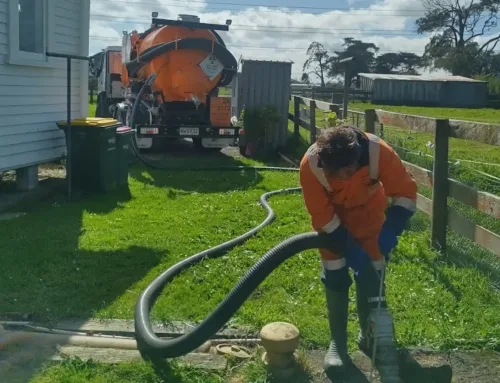The 10-Second Trick For Reclaim Waste
Some Known Incorrect Statements About Reclaim Waste
Table of ContentsThe smart Trick of Reclaim Waste That Nobody is Talking AboutRumored Buzz on Reclaim WasteAll about Reclaim WasteReclaim Waste Can Be Fun For EveryoneFascination About Reclaim Waste
Explore the types, events, and forms of liquid waste. Domestic sewage waste refers to the waste and items from a property septic system. This kind of waste is produced by people in homes, colleges, and various other buildings. This only consists of sewage-disposal tanks that have a drain field. The correct administration and disposal of residential sewage waste need fluid waste to be moved to a sewer treatment plant where the proper methods and tools are related to cleanse and take care of waste.
Commercial waste often consists of potential dangers, such as combustible materials or a mix of liquid and strong waste products, and requires a much more innovative and comprehensive disposal process. The disposal of commercial waste commonly involves the filtering of waste before transportation to make sure risk-free and appropriate disposal. Hazardous waste is developed from results and overflow of commercial processes and production.
This sort of waste can not use the very same sewer management transport or processes as septic or industrial liquids. The hazardous waste administration procedure calls for the examination and testing of fluid waste before it goes through the disposal process (liquid waste removal). Runoff waste is the liquid waste that comes from overflow and excess stormwater in highly booming locations or cities
Overflow waste can create contamination and flooding otherwise managed properly. Discover much more about drain cleaning and waste management. Making certain correct waste monitoring can stop calamities and minimize environmental harm. Both individuals in domestic setups and experts in business or production industries can take advantage of comprehending the processes and laws of fluid waste management.
The Only Guide to Reclaim Waste
Call PROS Providers today to find out about our waste management and disposal services and the appropriate methods to look after the fluid waste you generate.
(https://www.goodreads.com/user/show/183557660-leon-aube)This supposed 'wastewater' is not only an important resource but, after therapy, will certainly be launched to our land, rivers or the ocean. Utilized water from commodes, showers, bathrooms, kitchen area sinks, laundries and industrial processes is known as wastewater.

water made use of to cool down equipment or tidy plant and devices). Stormwater, a type of wastewater, is runoff that flows from agricultural and metropolitan locations such as roofing systems, parks, gardens, roads, courses and gutters into stormwater drains, after rain. Stormwater streams without treatment directly to neighborhood creeks or rivers, ultimately getting to the ocean.
How Reclaim Waste can Save You Time, Stress, and Money.
In Queensland, most wastewater is dealt with at sewer therapy plants. Wastewater is moved from residential or commercial sites through a system of drains and pump terminals, understood as sewerage reticulation, to a sewage therapy this content plant.
The Department of Natural Resources suggests city governments regarding managing, operating and maintaining sewage systems and therapy plants. In unsewered areas, local governments might need owners to mount specific or house sewage treatment systems to treat domestic wastewater from bathrooms, kitchen areas, shower rooms and laundries. The Division of Natural Resources authorises making use of home systems when they are confirmed to be efficient.
Many stormwater receives no treatment. In some brand-new communities, therapy of some stormwater to eliminate litter, sand and gravel has begun making use of gross toxin traps. Wastewater therapy takes place in four stages: Removes strong matter. Larger solids, such as plastics and other items wrongly released to drains, are eliminated when wastewater is travelled through screens.
Makes use of tiny living organisms understands as micro-organisms to damage down and get rid of remaining liquified wastes and fine particles. Micro-organisms and wastes are integrated in the sludge.
About Reclaim Waste
Nutrient removal is not offered in any way sewage treatment plants since it needs costly specialist tools. It is coming to be extra usual in Queensland. Clear fluid effluent generated after therapy may still include disease-causing micro-organisms. If this effluent is released into waterways such as rivers or the sea, the micro-organisms will at some point pass away out.

This normally implies wastewater has to be treated or impurities eliminated before it can be released to waterways. Most wastewater moves into the sewage system. Under the Act, city governments carry out approvals and permits for ecologically relevant tasks (Ages) entailing wastewater releases that could have a local effect. The department carries out authorizations and permits to ERAs entailing wastewater releases that may have a regional or statewide effect.
Reclaim Waste Fundamentals Explained
Monitoring offers accurate info regarding water high quality and can validate that permit problems are being satisfied. The info acquired with surveillance offers the basis for making water quality decisions.